Executive Summary
The University of California produces the annual Accountability Report to provide greater awareness of the University’s efforts, operations and impact. The report serves as a planning tool for UC leaders, faculty and staff. As part of the University’s transparency efforts, the report is shared with a broad range of external stakeholders. It shows how the University is performing, including areas of strength and those needing improvement, and demonstrates the public benefits that come from state, federal, philanthropic and other investments in the University.
- 10 campuses, 5 medical centers and 3 national laboratories
- 251,700 students and 1.6 million alumni
- Fourth-largest health care delivery
system in California - Third-largest employer in California
This year, the executive summary emphasizes UC’s research enterprise. UC expended roughly $4.3 billion on research in 2014–15. This distinguishes UC from other segments in the state’s public higher education system. Research is fundamentally and inextricably woven into its education and public service missions. UC research informs public policy, drives solutions to societal problems, and fosters the next generation of innovators, leaders and educators.
Graduate students are critical to UC’s research. Their research often produces groundbreaking discoveries. They help teach, mentor and provide hands-on research opportunities to undergraduates, who learn to think critically, assess complex problems, adapt to challenges and seek solutions. This kind of creative thinking is sought by employers and positions UC alumni to make contributions to California and the world.
As a research and educational powerhouse, investments in the University of California deliver economic and social benefits to California and its citizens, as illustrated in the following examples:
Research
- UC receives more than half of its $4.3 billion research budget from outside of California.
- California startups based on UC technology licenses generate nearly $14 billion in annual revenue.
- UC produces, on average, five new discoveries a day — and holds more active patents than any other university system in the country.
Education
- 85 percent of undergraduates come from California, and UC puts California students first in admissions, financial aid and outreach.
- UC is an engine of social mobility: 42 percent of its undergraduates are from families in which neither parent holds a four-year degree.
- UC’s low-income students graduate at rates comparable to all other students, and on average earn more than their families after graduation.
Public Service
- UC plays a role in the education of more than 200,000 California K–12 and community college students, whether or not they are UC-bound.
- UC Health logged 4.5 million outpatient visits last year through its five medical centers.
- UC’s Division of Agriculture and Natural Resources has cooperative extension offices in every California county, and has helped make California the nation’s top agricultural state.
The University has a profound impact on the people it touches, who then in turn influence others. This executive summary shares some of those stories, along with examples of UC Presidential Initiatives that coordinate research and operational efforts across the system to enhance UC’s impact on California and the world. The full report, along with the data and visualizations, can be downloaded at http://accountability.universityofcalifornia.edu.
UC FACULTY: TAKING ON CALIFORNIA’S CHALLENGES AND SPURRING THE STATE’S ECONOMY THROUGH RESEARCH
Over the last decade, a Nobel Prize has been awarded to a UC-affiliated researcher or faculty member nearly every year. There are now 61 Nobel recipients in the UC system. Put another way, if UC were a country, it would place fourth in Nobel Laureates. More than 580 UC scholars have been elected to the National Academy of Sciences; 540 UC faculty have been elected to the American Academy of Arts and Sciences; and over 200 National Institute of Medicine members have a UC affiliation.
UC graduate programs and undergraduate campuses frequently appear at the top of national and international rankings. Six UC campuses are members of the prestigious 62-member Association of American Universities (AAU), a representation no other state system can match. Because of these honors and awards, UC serves as a magnet that draws both talent and investment to California, helping further the reach of UC’s teaching, research and public service activities.
UC research expenditures have doubled to almost $4.3 billion over the last 15 years, with the majority of funds coming from outside California. UC receives one-tenth of the nation’s academic research and development funds, and is the largest recipient of research funding from the National Institutes of Health and the National Science Foundation. These funds not only support research activities but are also used to create jobs and purchase goods and services throughout California beyond the ten campuses and five medical centers. Furthermore, commercialization of UC research often results in inventions, patents, licenses, products, services and startup companies that create additional jobs and local economic activity throughout California (see UC Research Impacts in California map below).
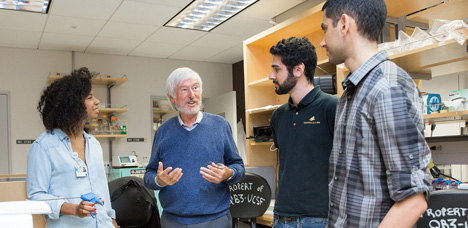
QB3 Director Regis Kelly, Ph.D., OBE, second from left, talks with scientists working in the QB3 Garage incubator space at Mission Bay. QB3 is a state institute that connects private industry with scientists at UC San Francisco, UC Berkeley and UC Santa Cruz. Photo by Susan Merrell, UCSF.

UC has launched the Innovation and Entrepreneurship Initiative to further the reach of UC research by building a vibrant and innovative entrepreneurial culture across the entire university. Central to this initiative is the UC Ventures Program, which supports entrepreneurship and technology commercialization by investing in UC discoveries and innovations.
These initiatives amplify the role that UC campuses play as centers of innovation. There are over 85 programs at UC supporting entrepreneurs at all stages of the innovation pipeline: from developing an idea to mentoring to incubating a startup company. Many programs launched or ramped up in FY 2015. Below are examples of such innovation at UC.
UNIVERSITY OF CALIFORNIA INNOVATION
Berkeley: The Startup @ Berkeley Law program lets students work with technology companies on intellectual property issues. The Dean’s Startup Seed Fund at Berkeley-Haas provides $5,000 grants to business students’ early-stage startups.
Davis: Venture Catalyst and HM.CLAUSE partnered to open the Life Science Innovation Center. Ideas are being turned into businesses by providing labs, greenhouse space, technical services and support.
Irvine: The Applied Innovation Institute joins investors, entrepreneurs and mentors. The COVE incubator makes it easy for startups to access support services.
Los Angeles: The Anderson School of Management and the Library launched the Anderson Venture Accelerator to encourage business formation by multidisciplinary teams including faculty, students, researchers and entrepreneurs.
Merced: The Office of Business Development launched the Venture Lab in downtown Merced. The workspace facilitates student, faculty and community partnerships.
Riverside: The campus is a nexus of economic development in the Inland Empire, including the UCR-run ExCITE business incubator in downtown Riverside.
San Diego: The Basement, a student-centric work and incubation space, encourages undergraduates to enter a new Proof-of-Concept Competition led by The Entrepreneur Challenge student organization.
San Francisco: The Institute for Quantitative Biosciences (QB3), the Entrepreneurship Center, and the Clinical & Translational Science Institute (CTSI) held a campus-wide event to promote entrepreneurial programs.
Santa Barbara: The California NanoSystems Institute (CNSI) opened a wet lab business incubator and partnered with the New Ventures Competition to provide space to competition winners.
Santa Cruz: The Center for Innovation & Entrepreneurial Development supports students and faculty interested in entrepreneurship with seminars, events, and internships.
Systemwide: UC collaborated with Johnson & Johnson Innovation to sponsor primeUC, a pitch competition for biomedical startups. Over 250 startups with a connection to UC participated, with 20 finalists competing for $300,000 in prize money provided by J&J.
The University of California serves as the state’s think tank, researching and addressing some of the most pressing challenges facing California and the world. UC is working to combat global hunger; to develop models for affordable, high-quality health care; and to find answers to complex environmental questions.
As one example, UC has pledged to become carbon neutral by 2025, becoming the first major university to accomplish this achievement. UC’s Carbon Neutrality Initiative builds on UC’s pioneering work on climate research and furthers its leadership in sustainable business practices. Over the last six years, UC researchers have secured more than $491 million to develop technologies and management practices aimed at achieving carbon neutrality and addressing global climate concerns. Operationally, UC is improving its energy efficiency, developing new sources of renewable energy and enacting strategies to cut its carbon emissions.
In October 2015, the University hosted a Summit on Pathways to Carbon and Climate Neutrality, which brought together state and federal officials, corporate leaders, and green technology engineers to discuss scalable solutions designed by UC researchers to mitigate climate change and reduce greenhouse gases.
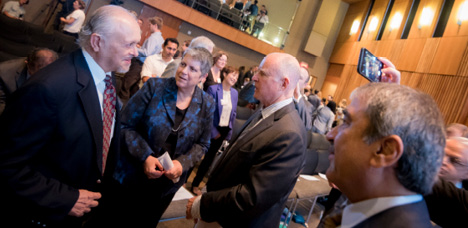
Nobel Laureate and Distinguished Professor Mario Molina, UC President Janet Napolitano, California Governor Jerry Brown and UCSD Chancellor Pradeep Khosla attend the carbon neutrality summit. Photo by Erik Jepsen, UC San Diego Publications.
UC faces numerous challenges in pursuing its research mission. The federal government provides more than half of UC’s research funding, and fluctuations in the federal budget alter the level of UC’s research activity. UC faculty are submitting a higher number of grant applications to maintain the same level of federal support, increasing workloads and costs. UC also faces increased competition in the recruitment and retention of world-class faculty and top-tier graduate students and postdoctoral fellows.
UC GRADUATE EDUCATION: MEETING CALIFORNIA’S WORKFORCE NEEDS
UC’s graduate academic doctoral and graduate professional degree programs rank among the best in the nation, according to recent rankings from US News and World Report. This allows UC to attract talented graduate students from California, the nation and the world, many of whom remain in the state after graduation.
Graduate enrollment, as a share of UC’s total undergraduate and graduate enrollment, has remained relatively flat over the past 16 years. UC has a lower overall proportion, at 21 percent, than the average AAU public institution of 27 percent, which is far lower than the 53 percent average for AAU private institutions. As enrollment of California undergraduates increases at UC, the University needs to expand enrollment of graduate students, who provide critical teaching and mentoring of undergraduates.
UC doctoral programs show high levels of success: completion rates are rising in every field and on every campus. UC’s doctoral alumni also give their education high marks. In a 2014 survey, 88 percent of UC doctoral alumni respondents said they felt well-prepared or prepared for their careers; 93 percent said they would pursue a doctoral degree again; and 89 percent indicated they would choose the same campus.
UC’s Ph.D. students and alumni are nationally recognized for innovation and entrepreneurship. At UC’s annual Grad Slam competition, students have three minutes to explain their research to a general audience. This year, UC Riverside’s Peter Byrley summed up his work with graphene — one of the most abundant materials on earth — to develop a new generation of small, powerful and less costly microprocessors. UC Ph.D. alumni were also recognized by Forbes’s “30 Under 30” — a list of “America’s most important young entrepreneurs, creative leaders and brightest stars.” UC graduates received Pulitzer Prizes in 2016 in journalism and the arts. UC Berkeley’s Viet Thanh Nguyen, who won a Pulitzer in fiction, credited his studies for revealing “that literature could matter in terms of politics and social justice.”
UC GRADUATE EDUCATION AT A GLANCE
- More than 20 UC Ph.D. recipients have won a Nobel Prize
- UC Ph.D.s account for 20 percent of CSU faculty
- UC trains about half of the state’s medical students and residents
- UC awards most of California’s advanced STEM degrees
UC DOCTORAL STUDENT/ALUMNI HONORS

UC Grad Slam Winner: UC Riverside’s Peter Byrley (chemical and environmental engineering Ph.D. student) is working to create smaller, more powerful microprocessors using graphene instead of silicon.

Forbes 30 Under 30: UC San Diego’s Sarah Guthals (computer science, Ph.D., emphasis in education) co-founded ThoughtStem, a company that teaches children to code by playing video games like Minecraft.
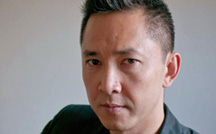
Pulitzer Prize Winner: UC Berkeley’s Viet Thanh Nguyen (English Ph.D. and English & ethnic studies, BA) won for his debut novel, “The Sympathizer,” a darkly humorous thriller about a double-agent living in California after the Vietnam War.
UC graduate students often become teachers and faculty members in California public schools. Half of UC academic doctoral and master’s degree recipients who stay in California work in higher education, including both public and private two-year and four-year colleges. The California State University system reports that over 20 percent of its faculty are UC Ph.D. recipients.
UC’s graduate academic programs in science, technology, engineering and mathematics (STEM) support the highly skilled workforce that the state’s high-tech industries need. UC produces 75 percent of life science and 65 percent of engineering and computer science doctoral degrees in California.
UC also awards graduate professional degrees in law, medicine, business, architecture and public policy. Many alumni work in the public sector, including California’s current Chief Justice Tani Gorre Cantil-Sakauye, a UC Davis transfer student who earned a bachelor’s degree and then a Juris Doctor degree. Three of California’s seven Supreme Court justices received J.D.s from the University of California, and one-half of all California State justices (including at the appellate court level) got their degrees from UC.
Recently, President Napolitano announced UC’s Public Service Law Fellowships, a first-of-its-kind systemwide fellowship program to support UC law graduates committed to public service. The program awards $4.5 million annually to students at UC Berkeley, UC Davis, UC Irvine and UCLA, making post-graduate and summer positions in the public interest more accessible.
UC UNDERGRADUATE EDUCATION: FURTHERING ECONOMIC MOBILITY AND ADDRESSING THE SKILLS GAP
The Public Policy Institute of California estimates that the state will have a shortage of a million college-educated workers by 2025. Expanding undergraduate access to UC is critical to meeting this need. With graduation rates near 90 percent, UC can help meet the state’s workforce needs if it receives additional state funding for enrollment. In partnership with the state, UC plans to increase undergraduate enrollment by 5,000 California residents next year.
The University of California is unique among top research universities in providing educational opportunity to large numbers of low-income and first-generation students. It is also expanding efforts to boost enrollment among underrepresented racial/ethnic groups and community college transfer students. Through its Achieve UC initiative, UC leaders are visiting high schools across the state to encourage diverse, low-income students to prepare for a UC education and to share information on financial aid and resources that make UC affordable and accessible. The University has approved transfer pathways to 21 of the most popular majors on each UC campus, making it easier for transfer students to identify the courses they need for admission to UC.
As part of the growth of 5,000 California residents, UC expects to move closer to its goal of enrolling two freshmen for every one transfer student, or a 2 to 1 ratio. This is an ongoing effort: in 2007–08, the ratio was 2.42 to 1. In 2015–16, it is 2.27 to 1. UC extended its transfer application deadline this year, which increased the applicant pool by 2,000 students.
For families, UC can be the most affordable public higher education option within California. The Institute for College Access & Success (TICAS), an independent nonprofit working to make higher education accessible and affordable, released a brief comparing the total cost of college for very low-income students at the three public postsecondary sectors of California: the nine UC campuses and nearby California State University (CSU) and California Community College (CCC) campuses. Their analysis showed that for six of UC’s nine undergraduate campuses, it was less expensive for a student to attend UC than to attend the local CSU or CCC.
UC’s strong financial aid program, with significant support from the state and federal government, keeps UC affordable. As a result, 57 percent of UC undergrads in 2014–15 had all systemwide tuition and fees covered by grants, scholarships and other aid. The proportion of students graduating without any debt is higher than it was a decade ago. About 45 percent of students graduate without any debt; of those who do borrow, the amount, on average, is $20,800, well below the national average of $29,400. That translates to a monthly loan payment of about $220, comparable to, if not below, a standard car loan payment.
UC graduation rates have been improving for years and are now at an all-time high. The largest improvements are in four-year rates for freshman entrants and two-year rates for transfer entrants. The majority of UC freshmen (64 percent) graduate in four years, and the majority of transfer students (55 percent) graduate in two years. One term later, graduation rates jump to almost 70 percent, and one year later, to over 80 percent. As a result, UC‘s average time to degree is roughly 4.1 years for freshman entrants and just over two years (2.3) for transfer entrants.
Campuses continue to look for ways to improve undergraduate outcomes. UC campuses, in collaboration with the Office of the President, produced a report titled Advising Strategies to Support Timely Graduation, which includes programmatic strategies, technology and tools, and organizational strategies to improve graduation rates.
UC has also begun experimenting with adaptive learning technologies to help students succeed in gateway STEM courses. Campuses are also reviewing major requirements to determine if the number of courses in a particular major can be reduced while still meeting accreditation standards and learning outcomes. They are assessing what incentives will encourage students to enroll in summer courses. The Academic Senate is also reviewing the use of Advanced Placement and credit by examination to reduce time to degree.
Roughly 70 percent of UC bachelor’s degree recipients stay in California, where they contribute to the local economy and become part of the highly skilled workforce. UC graduates are well-represented in the fields of education, health care, engineering and manufacturing. Labor statistics show that, on average, UC bachelor’s degree recipients — regardless of discipline — double their earnings between two and ten years after graduation.
Many UC degree recipients leverage their education and research experience to start businesses. UC alumni have started some of California’s most successful enterprises, including Intel, Gap, TMZ, AIG Retirement Services, GoPro, Zappos, Lyft, PhillyCarShare, Huffington Post, BuzzFeed, the Cato Institute and the Tides Foundation.
This year’s Forbes “30 under 30” list included influential entrepreneurs who are advancing innovative technology and social causes, detailed below. UC Santa Cruz graduate Martha Mendoza received her second Pulitzer Prize for journalism as part of an Associated Press (AP) team that uncovered the use of slave labor in the Thai seafood industry. Her first Pulitzer Prize was won in 2000 for investigative reporting as a member of an AP team that exposed civilian slaughter by American soldiers during the Korean War. Of her award and connection to UC Santa Cruz, Mendoza said, “It’s no coincidence that this university has produced so many Pulitzer Prize winners. It’s a place where students can better understand their role in our society, writing skills are emphasized, and everyone is encouraged to engage in their community and the broader world.”
UC undergraduates are exposed to researchers and experts who are at the cutting edge of their fields; their professors are creating discoveries that advance knowledge in their respective disciplines. Over 40 percent of seniors report that they were involved in supporting faculty research, and over 80 percent completed a research project or paper as part of their coursework. UC undergraduates receive a well-rounded education in which research and discovery are infused into the general curriculum.
UC UNDERGRADUATE EDUCATION AT A GLANCE
- 42% first-generation students
- 40% Pell Grant recipients
- 57% have all tuition paid by financial aid
- 45% graduate without loans
- Nearly 90% of freshman and transfer entrants earn their degree
UC UNDERGRADUATE ALUMNI HONORS
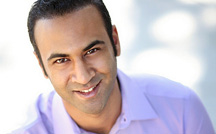
Forbes 30 Under 30: UC Santa Barbara’s Andrew Yakub (physics, BA) founded Rayton Solar which uses laser deposition technology to make solar wafers that are 1/100th the thickness of standard wafers.
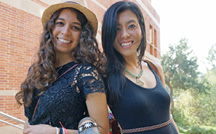
Forbes 30 Under 30: UCLA’s Ann Wang (international development studies, BA) and Jessica Willison (communication studies, BA) co-founded Enrou, an online marketplace for products made in US and developing communities in the world.
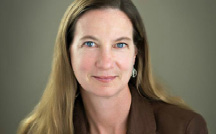
Pulitzer Prize Winner: UC Santa Cruz’s Martha Mendoza (journalism and education, BA) was part of an investigative journalism project that resulted in the freeing of more than 2,000 slaves.
UC AGRICULTURE AND NATURAL RESOURCES: FEEDING THE PEOPLE OF CALIFORNIA AND BEYOND
California’s $54 billion agriculture sector is one of the state’s top industries and produces food that feeds the state, the nation and even the world. UC research is at the forefront, fostering California’s agricultural success through scientific and technological innovation, and its efforts to address climate change, drought, invasive species and other challenges. UC’s Agriculture and Natural Resources (ANR) division coordinates research conducted through the Agricultural Experiment Station (AES), a multi-campus research unit on the Berkeley, Davis, Riverside and Merced campuses. In addition, Cooperative Extension — ANR’s outreach arm — serves the public in all 58 counties by bringing UC research to local communities.
ANR supports Californians’ nutritional needs through community partnerships at more than 2,400 locations statewide, helping to tackle childhood obesity and food insecurity, and fostering nutrition and health. The UC Expanded Food and Nutrition Program helps low-income families improve their nutrition practices and teaches food-budgeting skills. The UC CalFresh Program brings nutrition education to youth in local schools. ANR also manages popular statewide community education programs like the Master Gardener Program and the 4-H Youth Development Program, through which youngsters participate in hands-on education and inquiry-based learning in environmental, plant and animal sciences.
UC President Napolitano, together with UC’s 10 chancellors, launched the UC Global Food Initiative in 2014 to build on existing work and create new collaborations among all campuses and the Lawrence Berkeley National Laboratory. UC is drawing on its leadership in agriculture, medicine, nutrition, climate science, public policy, social science, biological science, humanities, arts and law to help communities in California and around the world eat more sustainably and nutritiously.
UC AGRICULTURE AND NATURAL RESOURCES AT A GLANCE
- 60 UC Cooperative Extension offices serving all 58 counties
- 1,500 4-H youth development programs
- Over 300 Master Gardener programs
- About 2,400 nutrition and health community programs
UC HEALTH: CARING FOR CALIFORNIANS
Through its academic medical centers at Davis, Irvine, Los Angeles, San Diego and San Francisco, UC operates the largest health science instructional program in the nation. Known as UC Health, it is the fourth-largest health care delivery system in the state, managing more than 165,000 inpatient admissions, 356,000 emergency room visits and 4.5 million outpatient visits each year. Nearly 60 percent of UC Health patients are covered by Medicare or Medi-Cal, or lack health insurance. UC Health also maintains active relationships with more than 100 affiliated Veterans Affairs, county and community-based health facilities in the state. Furthermore, UC is expanding its health outreach through telemedicine so UC experts can provide care for patients living in rural areas or where specialists are not available.
UC Health operates five major trauma centers, providing half of the transplants and one-fourth of the extensive burn care in the state. In 2014, UC hospitals were designated as Ebola treatment centers for California. In 2015, Governor Jerry Brown launched the California Initiative to Advance Precision Medicine with the University of California to collect, connect and apply research data to better understand why individuals respond differently to treatments and therapies, and to help guide more precise and predictive medicine worldwide.
UC San Francisco (UCSF) is hosting the two-year initiative, through UC Health, with $3 million in startup funds from the state. The public-private initiative aims to leverage these funds with contributions from academic and industry partners. In February, four UCSF leaders and researchers participated in the Precision Medicine Initiative Summit hosted by President Barack Obama.
At a time of unprecedented budgetary challenges, the financial success of UC medical centers has been an important resource for helping to augment diminishing state support for UC schools of medicine. However, the changing health care environment threatens their success and raises questions about whether the medical centers will be able to support UC medical schools. Among the uncertainties: reductions in federal and state spending for programs such as Medicare and Medi-Cal, cuts to the research budget for the National Institutes of Health, and challenges associated with health care reform.
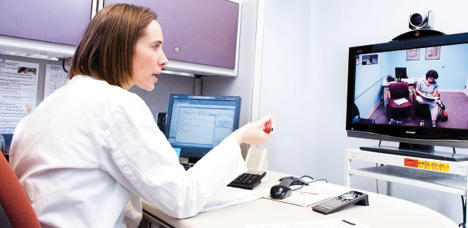
Dr. Alison Semrad, UC Davis. Photo by Elena Zhukova.
UC HEALTH AT A GLANCE
- 165,000 inpatient admissions
- 356,000 emergency room visits
- 4.5 million outpatient visits
- 60% of patient days covered by Medicare or Medi-Cal or lack insurance
- Half the transplants and one-quarter of extensive burn care cases in California
UC DIVERSITY EFFORTS: EXPANDING OPPORTUNITIES FOR UNDERSERVED GROUPS
UC is committed to reflecting the diversity of California, and has a variety of efforts underway to achieve this. It is working to diversify the UC community at the undergraduate, graduate, post-graduate and faculty levels, and to ensure that its administrators and staff are reflective of the state.
UC runs dozens of K–12 and community college programs to support academic preparation, and college readiness activities to ensure that a diverse pool of California high school graduates is UC-eligible. At the graduate and postgraduate levels, UC launched the UC-HBCU Initiative, which strengthens research and professional ties between UC faculty and their colleagues at historically black colleges and universities (HBCUs), while also creating opportunities for HBCU students to participate in summer research programs at UC.
UC has also expanded its programs to improve faculty diversity, including the President’s Postdoctoral Fellowship Program, which encourages outstanding women and minority Ph.D. recipients to pursue faculty careers at UC, and the UC ADVANCE program, which helps campuses recruit, retain and advance women and underrepresented minority women faculty in STEM fields. One outcome of this effort was the hiring of Assistant Professor Constance Iloh, recruited through the Chancellor’s Postdoctoral Fellowship Program and recognized on Forbes “30 under 30” list.
Each year, UC enrolls a growing number of undergraduates from underrepresented communities. Expanded enrollment funding is critical to UC’s efforts to enlarge underrepresented student populations. UC is making slow but steady progress in diversifying the racial and ethnic makeup of its graduate academic students. The proportions of female and Hispanic/Latino(a) faculty have increased across all fields. UC career staff have become more racially diverse.
UC is not satisfied with its African American and American Indian student enrollment. It is also focused on reducing the undergraduate graduation gap for underrepresented students, increasing the number and percentage of ladder-rank faculty who are female and/or from underrepresented minority groups, and staff diversity in all ranks; and improving the campus climate across all populations. To make advances, UC will need to augment existing efforts.
UC DIVERSITY AT A GLANCE
- Underrepresented minority (URM) new freshmen and transfers have grown almost 10 percentage points
- UC Ph.D.’s URM percentage is higher than AAU private and public peers
- UC ties for second in percent of URM new hires compared to Comparison 8 schools
UC PERSONNEL, FINANCES AND CAPITAL PROGRAMS: PRESERVING THE NATION’S TOP PUBLIC RESEARCH UNIVERSITY
The University of California is a $28.7 billion operation. UC’s largest source of revenue is its medical centers, followed by grants and contracts. Over the past ten years, state educational appropriations have fallen more than $1 billion in inflation-adjusted dollars despite rising student enrollment. Tuition and fees have gone up to offset those declines, but they have not made up for the reductions in state support. Students and their families now shoulder more of the costs. One of the ways that UC has maintained its affordability for lower-income students is by earmarking about one-third of tuition receipts for financial aid.
Personnel costs, including salaries, wages and benefits, account for more than 60 percent of expenditures. UC employees make University operations possible. As California’s third largest employer — with almost 210,000 faculty and staff — the way that UC compensates its workers has a far-reaching impact on the communities where they live. As a result, UC is also working to improve wages for its lowest-paid workers, and this year the University implemented the Fair Wage/Fair Work Plan, requiring that all UC employees working at least 20 hours a week be paid at least $15 per hour by October 2017.
UC expects to face rising costs for both health care and faculty salaries. Faculty salaries lag behind those of comparable universities by 10 percent.
Questions about the growth in UC’s labor costs typically focus on executive compensation. The reality is that compensation for UC’s senior management group accounts for less than one percent of its budget. The primary driver behind rising labor costs is growth in UC Health employees.
On the general campus, the number of staff paid with state funds, tuition and student fees has gone down in recent years, as has the number of senior managers.
UC spent about $1 billion on capital operations in 2014–15, with the majority of these funds used to support academic facilities and deferred maintenance. State funds were historically the primary source of funding for core academic facilities but have only accounted for about 15 percent over the last decade, with external financing now dominating.
The University spends less today to educate a student than 15 years ago, with inflation-adjusted expenditures per student dropping from $23,200 in 2000–01 to $18,900 in 2015–16. At the same time, operational costs are rising and UC has deferred-maintenance backlogs. The University has moved aggressively to reduce operating costs and to identify alternative sources of revenues to protect the academic experience.
Some of the steps taken include:
- Execution of a new retirement program, set to take effect in July 2016, which will result in expected savings of $99 million per year.
- Implementation of the Working Smarter initiative, which has resulted in savings of $660 million.
- Execution of UC Health’s Leveraging Scale for Value initiative, which resulted in $59 million in savings in FY 2015 and is on track to deliver savings of $100 million in FY 2016 and $150 million in FY 2017.
UC OPERATING AND CAPITAL RESOURCES AT A GLANCE
- $28.7 billion in revenues
- 33% in medical centers
- 20% in grants and contracts
- 14% in student tuition and fees
- 10% in state educational appropriations
- 60 percent of expenditures associated with personnel
- Senior managers represent <1% of employees
- $1 billion in capital spending
- 10% from state funds
UC: AN INVESTMENT IN CALIFORNIA’S FUTURE
Student enrollment at the University has quadrupled over the past 50 years.
Undergraduate and graduate student enrollment, with campus opening date Universitywide (Fall 1868 to 2015)

Download data for above graph
In a keynote address at the Town Hall Los Angeles, President Napolitano said:
“If there is one word that best captures the ethos of the University of California, it is the word ‘opportunity.’ Opportunity is the driving force behind the hundreds of thousands of students that UC educates, a number far greater than those educated by the University’s private peer institutions. Opportunity represents the brainpower of our researchers and faculty, who set the bar for scholarship in their disciplines and fields of study. Opportunity underlies the University’s public service mission. It is a catchall term for the public service we undertake, giving back to the people of this state and this country. Opportunity is what makes the University of California this state’s unique institution.”
One of the best ways UC demonstrates its impact in California is through the educational opportunity that it provides to so many low-income students. Forty percent of UC undergraduates are Pell Grant recipients, meaning that they come from families with incomes of about $50,000 or less. That compares to 22 percent for other AAU public institutions and 17 percent at AAU private institutions. Not only does UC enroll more Pell Grant recipients but they also graduate at comparable rates to non-Pell recipients. Within five years of receiving their UC diploma, these alumni earn more, on average, than what their parents earned while the Pell Grant recipients were students at UC.
The New York Times last year described UC as “California’s upward mobility machine,” finding that despite state budget cuts, “The system’s nine colleges still lead the nation in providing top-flight college education to the masses.” The Times’ College Access Index ranked institutions based on their proportion of Pell Grant recipients, the graduation rate of those students and the net cost for attendance. Using that formula, six of the top seven universities in the country were UC campuses.
Over the past half-century, the University has quadrupled its total enrollment, and it is planning to increase the number of California undergraduates by 5,000 in 2016–17. UC would like to continue to expand enrollment further, including the enrollment of graduate students, and is working with California’s elected leaders to secure additional graduate enrollment funding. Working together, UC and the state can improve access to UC for a diverse pool of undergraduate and graduate student populations — California’s future leaders.
The University of California is the world’s premier public research university, and continues to benefit the state and the nation by developing an educated and enlightened citizenry; producing research that supports economic development and critical discoveries; supporting agricultural and public service needs; and producing future health care professionals while providing essential patient care.
The University of California enrolls more than 251,000 students at its ten campuses. UC produces graduates who meet the state’s critical needs, including the largest proportion of science, technology, engineering and mathematics (STEM) degrees compared to CSU and private counterparts, and half of California’s medical students and residents. More than 70 percent of bachelor’s degree recipients go on to work in California, as do over half of the graduates in academic Ph.D. and master’s programs, and about 65 percent of professional program graduates. Of UC’s more than 1.6 million living alumni, 1.2 million are California residents.
UC is looking for creative ways to use its own resources to support expanded enrollment. The President’s Student Housing Initiative aims to accelerate the creation of affordable student housing at every UC campus. The UC housing initiative has set a target of adding roughly 14,000 more beds to support existing students and future enrollment growth.
UC aims to expand enrollment across the entire UC system, including at UC Merced, its newest campus and one that provides significant educational opportunities for residents of California’s Central Valley. In November, the UC Board of Regents approved UC Merced’s 2020 project, which will double the physical capacity of the campus by 2020 and support enrollment growth from nearly 6,700 students today to 10,000 students within the next five to seven years.
The University will continue to work with the state and federal government to expand financial support for research, to develop partnerships with business leaders, to increase philanthropy, and to leverage existing revenues and investment funds to protect and expand the University of California.
An investment in the university pays dividends:
- Every $1 the California taxpayer invests in UC and its students generates $9.80 in gross state product and $13.80 in economic output.
- With a nearly 90 percent graduation rate, an investment in undergraduate enrollment is an investment in more college graduates.
- Investing in graduate student enrollment helps undergraduate student success and helps UC diversify the state’s future researchers, faculty members and state leaders.
- UC alumni contribute to California’s skilled workforce and help drive its entrepreneurial efforts.
- UC research attracts billions of dollars to California, supporting local innovation hubs and producing the knowledge and discoveries that solve our shared challenges.
- UC ANR protects and strengthens California’s agricultural industry, while UC Health cares for the neediest of Californians and creates the cures for tomorrow.
The opportunity cost of not having a strong University of California is great, not just for the institution but also for the state, the nation and the world. This Accountability Report identifies many of the challenges UC faces but also demonstrates that UC continues to be an outstanding investment for a better tomorrow.